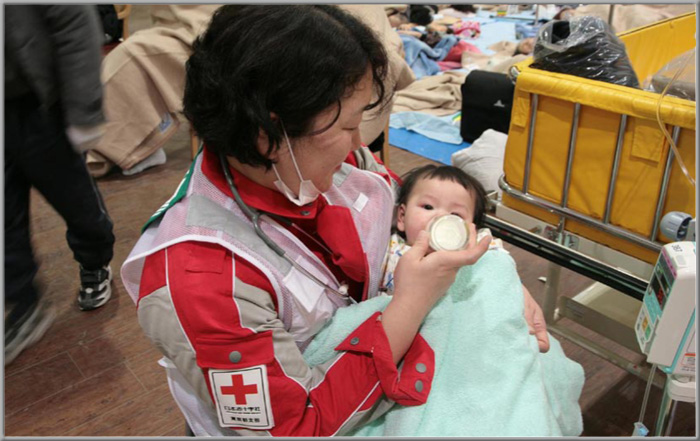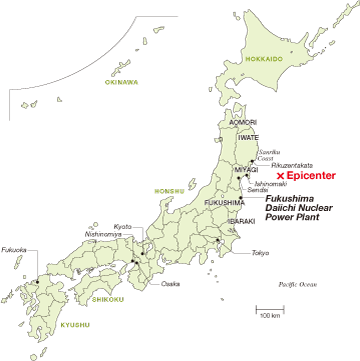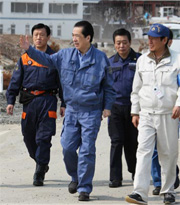Home > Highlighting JAPAN > Highlighting Japan APRIL 2011 > Pulling Together—Thank you for being at our side
Highlighting JAPAN
COVER STORY: Pulling Together—Thank you for being at our side
Caption: A member of the Japanese Red Cross feeds a baby at the Ishinomaki Red Cross Hospital in Miyagi Prefecture, March 12.
Credit: REUTERS/AFLO
Pulling Together—Thank you for being at our side

After the earthquake, massive tsunamis pounded the Pacific coast of northern Honshu, with waves estimated as at least 20 meters high at their peak. Coastal areas in northern Honshu had used data from past temblors to prepare for tsunamis and had constructed breakwaters and conducted emergency drills in advance, but the size and the force of the waves far surpassed expectations. The tsunamis swept away houses, cars and boats with an unstoppable force, leaving massive ruins along the northern Honshu coast. As of April 11, the severity of the devastation was clear: the death toll had risen to 13,100 and another 14,300 people were still missing; some 48,700 buildings had been destroyed.
Thankfully, immediately following the earthquake, a chain of support arose not just around Japan, but also worldwide. To date, 134 countries and regions and 39 international organizations have generously pledged assistance to Japan. In addition, huge numbers of people worldwide have pitched in to hold various fundraising activities and charity events.
One month after the earthquake, Prime Minister Naoto Kan contributed the following message to foreign newspapers:

Prime Minister Naoto Kan surveys the destruction caused by the Great East Japan Earthquake in Rikuzentakata, Iwate Prefecture, April 2.
"I pledge that the Japanese government will promptly and thoroughly verify the cause of this incident, as well as share information and the lessons learned with the rest of the world to help prevent such accidents in the future.[...]
"The Japanese people rose from the ashes of the Second World War using our fundamental strength to secure a remarkable recovery and the country's present prosperity. I have not a single doubt that Japan will overcome this crisis, recover from the aftermath of the disaster, emerge stronger than ever, and establish a more vibrant and better Japan for future generations.
"I believe that the best way for Japan to reciprocate the strong kizuna (bonds of friendship) and cordial friendship extended to us is to continue our contribution to the development of the international community. To that end, I will work to the best of my ability to realize a forward-looking reconstruction that gives people bright hopes for the future. I would wholeheartedly appreciate your continued support and cooperation."
© 2009 Cabinet Office, Government of Japan






